One of the things that is asked the most of Tibetan tour operators is “How much will it cost to go to Tibet?” The simple answer is, that depends on what you want to do and how long you want to go for. The cost of a Tibet tour can vary greatly, from the horrendously expensive tours for one person for three weeks, visiting as much of the region as possible, to the simple group tour with as many as ten members in the group, who are just spending a few days in Lhasa. The cheapest tours to Tibet, normally for around five nights, can be from as little as US$ 650, with more expensive versions of the same trip costing more than US$ 1,500.
For anyone who is traveling, the cost of the trip is one of the most important aspects, and everyone wants to think that they are getting value for money. When visiting Tibet, you always get that, and whatever your cost, you are guaranteed to get the best trip possible. To make things a little easier for you when planning your trip, or if you are just considering whether to take a trip to Tibet, here are some of the basic costs of the different aspects of a Tibet tour that can help you in understanding the total cost of the trip.
Tibet Travel Permits
Wherever you go in Tibet, you are required to have permits. Whether it is just to Lhasa, the Tibetan capital, or you intend to head off to visit Mount Everest and the sacred Mt. Kailash, there are a number of permits that you need to obtain.
Chinese Entry Visa
As with all countries, before entering China in order to visit Tibet, you need to obtain the Chinese Entry Visa from the Embassy of the People’s Republic of China in your home or resident country before traveling. Unlike many countries in Asia, China does not have an online visa application, E-visa, or Visa On Arrival service. All visas must be applied for through an embassy with a personal visit in most countries.
The standard visa category for tourists to China is the “L” category visa, and is the visa needed in order to obtain the other permits for Tibet. To get the visa, you simply need to visit the local Chinese Embassy and make the application, including your supporting documents, which are your passport and two passport-sized photos.
The cost of the visa does vary, depending on your country of origin. Chinese visas can be for single entry, double entry, and multiple entries. The cost is the same for each type of visa, based on your country of origin or residence.
The cost for a Chinese Entry Visa is:
U.S. Passport Holders – US$ 140
Canadian Passport Holders – US$ 75
Other Nations Passport Holders – US$ 30 to US$ 155 (depending on country of origin)
Payment for the visa is made on a collection, and cannot be paid using cash or personal checks. The only permitted payment is by Money Order, Cashier’s Check, Company Check, or Credit Card. However, the Chinese Embassy’s only accept MasterCard and VISA as permitted credit cards for payment. No other credit card is accepted. The amount of the check or money order must be for the exact amount, and incorrect checks or money orders will not be accepted.
The visa processing time is normally four business days, although the Chinese Embassy has a faster visa service in some countries, including the United States. The cost of the Express Service is an additional US$ 20 per visa (2-3 business days), and the Rush Service costs an additional US$ 30 per visa (one business day). The Rush Service is only available in extreme emergencies, and must be approved by the consular officer at the embassy.
Tibet Travel Permit (Tibet Visa)
The Tibet Tourism Bureau in Lhasa issues the Tibet Travel Permit, also known as the Tibet Visa, and the permit cannot be applied for personally. As with all permits for travel in Tibet, the Tibet Travel Permit must be applied for through a registered Tibet Tour operator such as Tibet Vista. The permit can only be issued once you have booked and paid for a guided tour service through the tour operator, and requires scanned (color) copies of your original passport and Chinese Entry Visa.
There are no restrictions on the size of the group you are traveling with, as long as your tour is booked through a registered tour agency. The application process requires around 15 days to complete, and once obtained, your tour operator will deliver the permit to your hotel in China on your arrival.
The Tibet Travel Permit is required to enter and travel within certain areas of Tibet, and visitors to Tibet cannot board the flights or trains without it. It is only valid for travel within the general area of Lhasa and Nagqu, and for trips outside that area, other permits will also be needed. Some websites will tell you that all of the permits for Tibet cost a certain amount. This is true, although with Tibet Vista, the cost of the permit applications and processing is normally included in your overall tour price. Apply for Tibet Travel Permit online right now!
Alien’s Travel Permit (PSB Permit)
Issued by the Public Security Bureau, the Alien’s Travel Permit is required for visiting areas outside the general area of Lhasa, such as Shigatse, Nyingchi, Shannan, Gyantse, Ngari, and Chamdo. These areas include places like Mount Everest, Rongbuk Monastery, Pelkor Monastery, Mount Kailash, Samye Monastery, etc.
The application for the Alien’s Travel permit can be made in Lhasa once you arrive, and your tour guide will make the application on your behalf. The requirements for the permit are your original passport, Chinese Entry Visa, and Tibet Travel Permit. Getting the permit normally takes around 30 minutes, and does not require you to be present.
Restricted Areas Permit (Military Permit)
Certain areas of Tibet are known as “unopened” areas, and are usually military sensitive areas of the region. For travel to these areas, you will need the Restricted Areas Permit, or Military permit as it is often known. The permit covers the areas in Ngari, Nyingchi, and Chamdo, and is required for visiting Mount Kailash and Lake Manasarovar, and for traveling to Tibet from Xinjiang, Sichuan, Yunnan, and Qinghai when traveling overland (not by train).
Applications for the Military Permit take a long time, so your tour operator will make the application for you before you travel to Tibet. Approval of the permit requires scanned copies of your passport and Chinese Entry Visa at least 20 days before your intended date of travel to Tibet.
Tibet Border Pass (Frontier Pass)
The remote destinations in Tibet that are close to China’s borders with Nepal and India require another permit, known as the Tibet Border Pass, or Frontier Pass. The pass is issued by the Tibet Armed Police Border Corps in Lhasa, and cannot be applied for by individuals. Once again, the pass is obtained by your tour operator, and requires a copy of your Tibet travel Permit to obtain it.
The Tibet Border Pass is required for those travelers visiting Ngari, including Mount Kailash and Lake Manasarovar, the area around Mount Everest and Rongbuk Monastery, and the Yadong Border area in Shannan Prefecture. It is also required for travelers crossing the border into Nepal, both ways, and for those who are flying from Kathmandu to Lhasa. For those flying or traveling overland from Nepal to Tibet, your tour operator will provide you with a scanned copy of the pass before you leave. For all other travelers, it will be given to you when you reach Lhasa.
Group Tourist Visa
Travelers entering Tibet from Kathmandu in Nepal have a different type of visa than those entering through mainland China. Known as the Group Tourist Visa, it is issued by the Chinese Embassy in Kathmandu, and replaces the standard Chinese Entry Visa that is required to enter China from any other route. If your passport already has a Chinese Entry Visa, it will be canceled and the Group Tourist Visa will be issued in its place.
The Group Tourist Visa is a kind of single entry visa that is valid for 30 days from the date of issue, and requires you to be in Kathmandu at least 4-5 days before your expected date of travel to Tibet. The visa is only applied for by your tour operator, and requires your original passport, Tibet Travel Permit, and the invitation letter from the Tibet Tourism Bureau, which are obtained in advance by your tour operator once you have booked your trip.
Your passport will be collected by a local agent in Kathmandu, along with the fee and two passport-sized photos and the completed application form, and the application will be made by the agent on your behalf. Individual applications for the visa are not permitted. Once completed, the agent will bring the visa to your hotel in Kathmandu ready for your trip. The Group Tourist Visa is required for all travelers to Tibet from Nepal, both by land and by flight.
While it is known as a “group” visa, it can be applied for as an individual by your tour operator, and does not require you to be part of a group, just part of an organized tour. However, if you are part of a group when applying for the visa, all parties in the group will be named on the visa, and all members of the group must enter and exit Tibet at the same time and at the same place. If you are part of a larger group, and wish to exit to China for further travel, while others will be leaving through Nepal, Tibet Vista can make arrangements for you to have a separate Group Tourist Visa.
The cost of the visa does vary depending on your country of origin, and can range from as little as 60 dollars to as much as 140 dollars. As with most visa fees, the cost is higher for U.S. and Canadian passport holders.
Tibetan Tour Guides
With Tibet Vista, the price you pay includes the cost of having a private Tibetan Tour guide. All visitors to Tibet must have a registered tour guide with them at all times when in Tibet. Private guides in Tibet can be costly, as they are required to be trained and registered with the Tibet Tourism Bureau. However, if you are traveling with a larger group of people, or are planning to join a Tibet group tour that has already been arranged by the tour operator, then the cost of the guide is split equally between all members of the group. This is one way of reducing the cost of your trip to Tibet to make it a little lighter on the wallet. It is also expected that you will tip your guide for their services, as guide service charges are not included. On average, the tip is normally around seven dollars per day, and this can also be split between all the members of the group.
Vehicle and Driver Costs
Your vehicle and driver are also included in the total cost of your trip with Tibet Vista, which means that by joining a group tour or traveling with friends you can again reduce the costs of the trip. The vehicle you travel in when outside Lhasa will be a comfortable tourist vehicle, suitable for the size of your party. Tipping the driver is also expected on Tibet tours, and the same amount as for the guide is appropriate, and can be split between the members of the group.
Hotels and Guesthouses
Hotel accommodation in Tibet is not like it is in many western countries. The star rating is a little different, and what would be a five-star hotel in Lhasa would be a three-star hotel in the United States. Having said that, hotel accommodation in Lhasa and some other places is very good, and has all of the modern facilities that you would expect, such as hot running water, central heating or air conditioning, Wi-Fi, and western food.
Where you stay does depend on how much you are willing to spend, and you can expect a twin room without a private bathroom to cost from 8-12 dollars Lhasa or Shigatse. For more expensive hotels, you can expect to pay around 30 to 60 dollars for a double room with bathroom. When traveling in Tibet, it is best to share a room, as a single occupancy supplement is charged. The top of the range hotels can cost as much as 150 dollars for a double or twin room, and you can be assured that Tibet caters for travelers of all budgets.
Meals
Food and drink in Tibet are often subject to higher prices than in lower regions such as Sichuan. This is mainly because of the cost of getting many of the goods up to the plateau, and even across the rugged terrain to the west of the region. Cheap meals can be found, and are usually local Tibetan dishes or simple Chinese food such as noodles and soups, and a basic Tibetan restaurant meal can cost as little as 2-5 dollars. However, while these very cheap meals will keep your budget low, they are not very nutritious, and you may need to bring food supplements with you.
There are many high-class dining establishments in Lhasa and Shigatse, where you can get better quality and more expensive meals, and 10-15 dollars per head is about the average. As Tibet is set in the high-altitude plateau, there are many places where vegetables you take for granted are not available, so expect to be a little limited on the foods you can get, especially in the more remote areas of the plateau. Food supplements and some packet foods are a great idea to bring with you.
Entrance Fees
Once you have booked your itinerary with Tibet Vista, all your entry fees for the monasteries, temples, and other places that you will visit are included in the total price. If you do decide you want to visit a temple or monastery that is not on your expected itinerary, then you will be required to pay for the entrance fees yourself, although they are not really expensive anyway.
Shopping
Shopping in Tibet uses a system of haggling for many of the things you want to buy as souvenirs. There are several good markets around the region, and the best of all is at Barkhor Street, in Lhasa. However, you should be careful of what you buy when in Tibet, as some artifacts and antiques are not allowed to be taken out of Tibet and China.
Some of the most beautiful souvenirs can be bought in Tibet, such as small Thangka paintings, fine jewelry, local handicrafts, and Tibetan knives, masks, and carpets. Prices can vary from place to place and item to item, and you can often haggle on the price to bring it down a little from the original asking price. This is often expected in transactions in Tibet, as it is in many parts of Asia, though if you are not sure about haggling, you can get some help from your guide. The general rule is not to expect to go too low and get some great item for next to nothing, as this is not the way to haggle.
Additional Fees
Obviously, not everything in your entire trip is included in the tour price. There are always going to be some items and costs that are outside the cost of the tour. One of these is your flight to China or Kathmandu, and your flight or train ticket to Tibet. Flights from China to Lhasa can cost from 350 to 500 dollars each, depending on where you fly from in China. As there are no international flights from outside China to Tibet (with the exception of Kathmandu), all flights to Lhasa must be from either China or Nepal.
Taking the train to Tibet is the other option, and one that is most popular with foreign visitors to the region. One of the benefits of taking the train is the stunning scenery you get to see as the tracks pass through some of Tibet’s most breathtaking landscapes, and over some very high mountains.
Trains have three main types of tickets: soft sleepers, hard sleepers, and hard seats. Many foreign travelers prefer the soft sleeper berths as they get a little more room in the bunk and in the cabin. Soft sleepers have four berths, while hard sleepers have six, in three tiers. The cost is relevant to the cabin you choose, as well as the berth you require, with the lower berths being the more expensive in each cabin. As an example, a soft sleeper from Beijing, which takes around three days to get to Lhasa, costs around 180 dollars, while the same from Chengdu only costs around 100 dollars for the two-day long trip.
For the specific cost of each ticket from the different gateway cities in China, there is normally a relevant price list in the railway stations, or you can look online. Tibet Vista has the latest prices on our website.
Why Travel with Tibet Vista?
As the oldest and longest running tour operator in Tibet, Tibet Vista has many years experience in organizing tours for foreign travelers to Tibet, as well as the Tibetan areas of Amdo and Kham in China. A pioneer of the Tibetan tourist industry since 1984, Tibet Vista has been running group and individual tours to Tibet for 33 years, and provides Tibet tours to more than 5,000 visitors every year.
In 2005, Tibet Vista moved to providing an online service for potential tourists to Tibet, and was the first to offer online booking services for group tours, where clients can join pre-organized tours to Tibet with other tourists who are interested in traveling to the same places.
Tibet Vista also has a 100% guarantee that they can obtain your Tibet Travel Permit and other permits for your trip. We have cost-efficient budget options for travelers to join our join-in tours, and can provide train-booking services and tours of Sichuan and Yunnan, parts of which include the ancient Tibetan areas of Kham and Amdo. Our tour itineraries offer the best and latest attractions of Tibet, and the websites have comprehensive information on all Tibet tours, as well as many articles to read to learn more about Tibet and what to expect before you travel.
Overall, there is no better choice than Tibet Vista for your guaranteed Tibet tour of a lifetime.
.jpg)





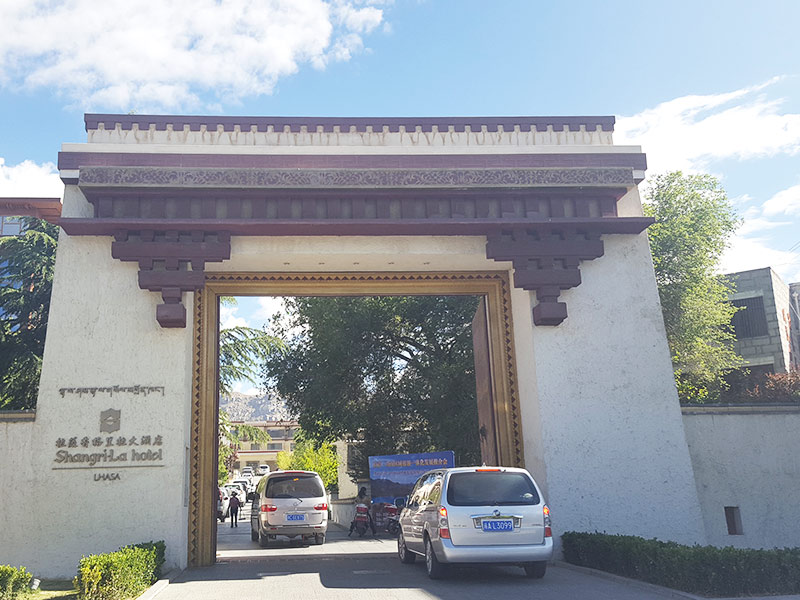
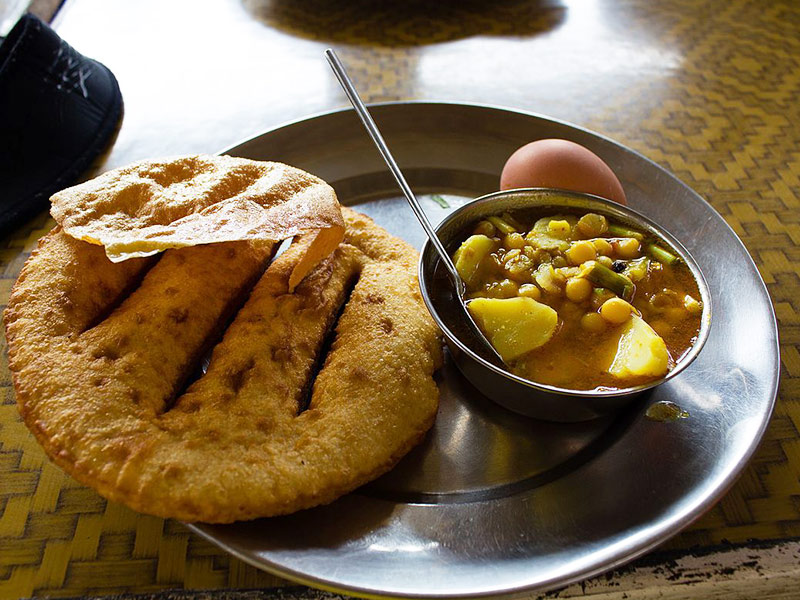
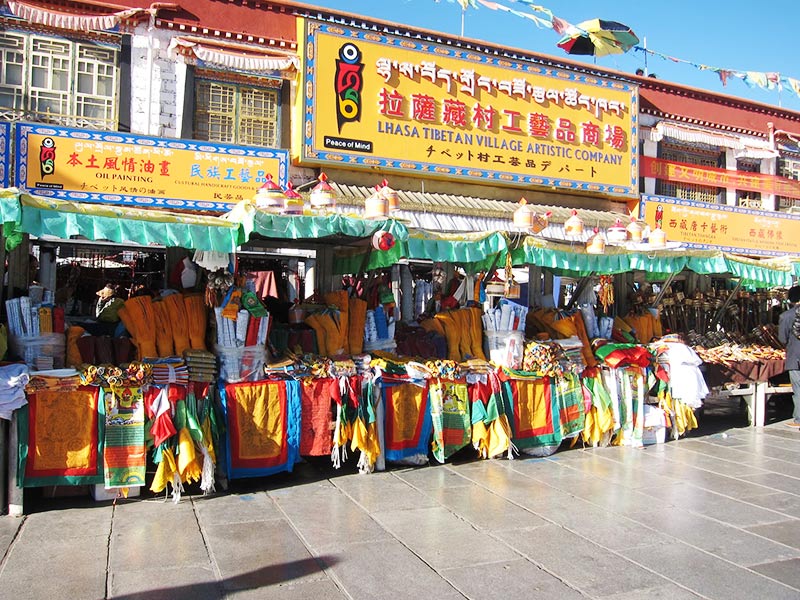
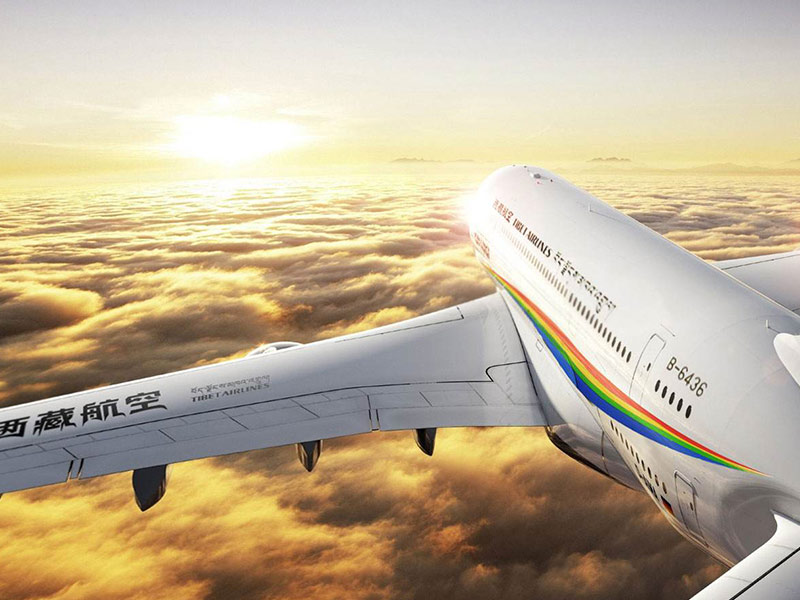

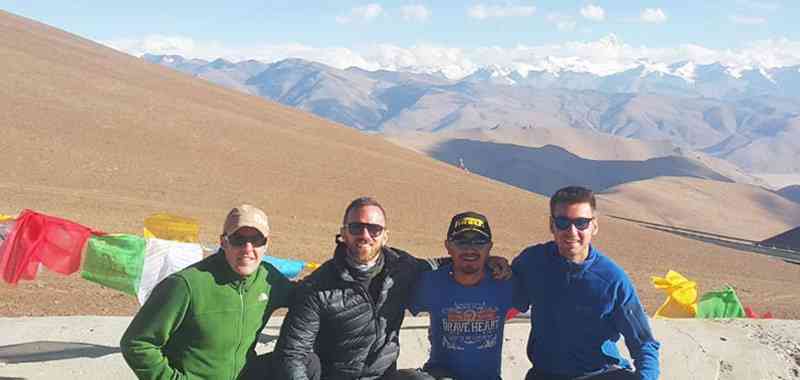






0 Comment ON "Tibet Tour Cost Breakdown: How Much Does it Cost to Travel to Tibet?"